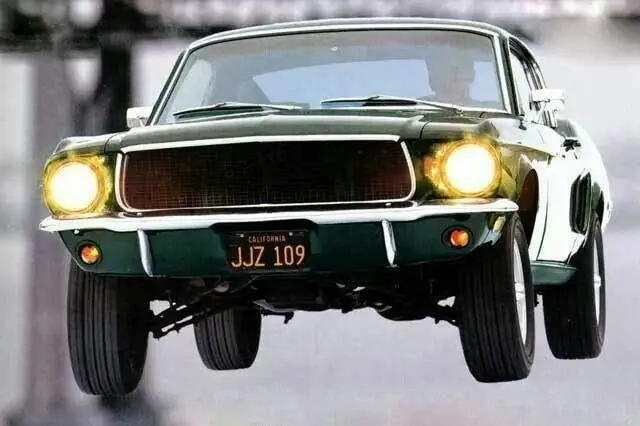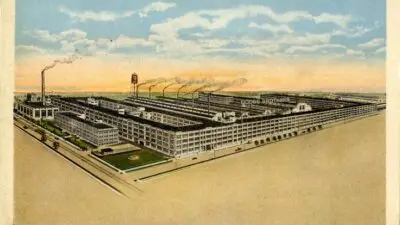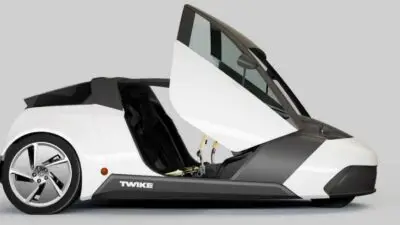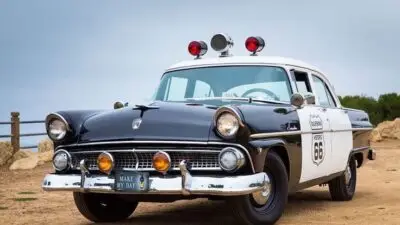Cars have played starring roles in movies since the early days of film. From sleek sports cars to rugged muscle machines, these vehicles often become characters themselves, leaving lasting impressions on audiences worldwide.

The most iconic movie cars transcend their films and become part of our cultural history, instantly recognizable even to those who haven’t seen the original movies. These automotive stars have influenced car design, consumer preferences, and even how filmmakers approach vehicle scenes in modern cinema. The relationship between cars and movies continues to evolve, creating new icons for each generation of moviegoers.
1) Aston Martin DB5 from Goldfinger

The Aston Martin DB5 is widely regarded as the most iconic movie car of all time. This elegant British sports car made its debut in the 1964 James Bond film “Goldfinger,” where it became instantly legendary among movie fans and car enthusiasts alike.
The silver DB5 driven by Sean Connery’s James Bond wasn’t just any car. It was equipped with an impressive array of gadgets that captivated audiences. These included machine guns, an ejector seat, bulletproof shield, and oil slick sprayers.
The DB5’s appearance in “Goldfinger” was so impactful that it secured an overwhelming 55 percent majority of fan votes as the all-time favorite James Bond car. Even today, it remains the most iconic Bond vehicle of them all.
The car’s sleek design and powerful presence made it the perfect match for 007’s sophisticated character. Its cinematic legacy continued as it appeared in several subsequent Bond films over the decades.
The DB5 has transcended its role as a mere movie prop to become a cultural symbol. It represents the perfect blend of luxury, performance, and spy-thriller excitement that defines the James Bond franchise.
2) DeLorean DMC-12 from Back to the Future

The DeLorean DMC-12 became an instant icon when it appeared as a time machine in the 1985 film “Back to the Future.” With its stainless steel body and distinctive gull-wing doors, this vehicle transformed from an automotive footnote to one of the most iconic film vehicles of all time.
Originally designed by the legendary Giorgetto Giugianni, the DMC-12 was the brainchild of auto executive John DeLorean. The stainless-steel stunner had a brief production run with only about 9,000 units manufactured.
The movie, starring Michael J. Fox and Christopher Lloyd, featured the DeLorean with modifications including a flux capacitor that allowed for time travel when the car reached 88 miles per hour. This premise became central to the film and its two sequels.
Before its movie appearance, the DMC-12 had limited commercial success. However, the film completely changed the car’s legacy, cementing it in pop culture history.
The DeLorean’s status in automotive film history is so significant that it consistently ranks alongside the Aston Martin DB5 from James Bond as one of the greatest movie cars ever.
3) Batmobile from Batman (1989)

Tim Burton’s 1989 Batman film introduced one of the most memorable versions of the Batmobile to hit the big screen. This sleek, black vehicle with its distinctive elongated body and bat-wing styling became an instant icon.
The 1989 Batmobile featured a jet engine, machine guns, and special shields – all the gadgets a crime fighter would need. It was built on a Chevrolet Impala chassis with a fiberglass body, giving it both a realistic feel and fantasy elements.
Batman, played by Michael Keaton, used this vehicle as his primary mode of transportation throughout the film. In the movie, Batman only referred to this vehicle as “the car”, though fans immediately embraced it as the definitive Batmobile.
This version of the Batmobile ranks among the most famous movie cars of all time and has influenced many subsequent Batman vehicle designs. Its gothic styling perfectly matched Burton’s dark vision of Gotham City.
The car’s design came from Anton Furst, who won an Oscar for his production design work on the film. His Batmobile struck the perfect balance between menacing and functional, creating a vehicle that was both believable and fantastical.
4) 1968 Ford Mustang GT Fastback from Bullitt

The Highland Green 1968 Ford Mustang GT Fastback driven by Steve McQueen in the movie “Bullitt” might be the most famous movie car ever. Detective Frank Bullitt’s Mustang became legendary after the film’s intense car chase through the streets of San Francisco.
This Mustang was more than just a prop – it became the first iconic movie star car. The vehicle’s significance has only grown over time, with car enthusiasts and movie fans alike celebrating its rugged appeal and cultural impact.
The original Bullitt Mustang made headlines when it sold for a record-breaking $3.74 million at auction. This incredible price tag made it the most expensive Mustang ever sold, cementing its status in automotive history.
While McQueen was certainly the human star of the film, many consider the Mustang to be the true scene-stealer of the movie. The car featured mild modifications for filming but maintained its authentic muscle car presence.
The Bullitt Mustang’s popularity has inspired numerous replicas and special edition models from Ford over the decades, proving its enduring cultural significance.
5) 1970 Dodge Charger from The Fast and the Furious

The 1970 Dodge Charger R/T driven by Dominic Toretto has become one of the most iconic cars ever used in any movie. This menacing black muscle car perfectly captured Dom’s personality and became a symbol of raw power in the street racing world.
In the first Fast and Furious film, Dom refers to the Charger as a 900-horsepower monster that he was afraid to drive. The vehicle featured a massive supercharger protruding from the hood, giving it an intimidating presence on screen.
The Charger serves as more than just transportation in the film. It represents Dom’s connection to his father and symbolizes his family bond. This emotional attachment adds depth to both the character and the vehicle.
One of the most memorable scenes shows the Charger performing a real wheel stand, lifting its front wheels off the ground during acceleration. This impressive stunt demonstrated the car’s immense power.
The 1970 Dodge Charger has appeared in multiple films throughout the Fast franchise, cementing its status as a movie superstar and one of the most recognizable vehicles in cinema history.
6) Ecto-1 from Ghostbusters

The Ecto-1 stands as one of the most recognizable vehicles in cinema history. This converted 1959 Cadillac Miller-Meteor ambulance became the official transport for New York’s supernatural exterminators in the 1984 film “Ghostbusters.”
Originally a hearse-turned-ghost-hunting vehicle, the Ecto-1 was purchased by Dr. Ray Stantz, played by Dan Aykroyd. Its distinct white body with red fins and roof rack full of ghost-catching equipment made it instantly memorable to audiences.
The vehicle’s nickname “Ecto-1” (short for Ectomobile) has become part of pop culture. It was specifically designed to transport the Ghostbusters and their complex equipment throughout New York City.
Movie fans can identify the Ecto-1 by its unique siren and flashing lights. The car appeared in the original film and its sequels, cementing its place in movie history.
The original car was a 1959 Cadillac Miller-Meteor Futura Duplex, a coachbuilt vehicle that was already rare before becoming famous on screen. Its unique design has made it a favorite among movie car enthusiasts for decades.
7) Mini Cooper S from The Italian Job

The Mini Cooper S became a cultural icon thanks to its starring role in “The Italian Job” film. In the 1969 original movie, these nimble British cars performed one of the most memorable car chase scenes in film history.
The film featured three Mini Coopers – red, white, and blue – racing through Turin, Italy. These small vehicles showcased impressive stunts as they navigated stairs, rooftops, and even sewers during the famous gold heist sequence.
When “The Italian Job” was remade in 2003, the Mini Cooper returned to the spotlight. The updated film featured the R53 generation Mini Coopers ripping through Los Angeles, recreating the magic of the original with modern vehicles.
Charlize Theron drove a 1997 Mini Cooper Mk VII in the 2003 film, which paid homage to the classic version. The movie helped introduce Mini to a new generation of fans.
The stunts performed by these small but mighty cars highlighted their agility and performance capabilities. Many car enthusiasts have developed an appreciation for the Mini Cooper specifically because of its iconic role in these films.
8) Herbie the Volkswagen Beetle from The Love Bug

Herbie is a sentient 1963 Volkswagen Beetle that became one of cinema’s most beloved automotive characters. This white “rag top” Bug with racing stripes and the number 53 first appeared in Disney’s 1968 film “The Love Bug.”
What made Herbie special was his human-like ability to express emotions and his remarkable racing skills. Despite being a small economy car, he could outperform powerful racing vehicles on the track with his supernatural speed.
“The Love Bug” was actually Walt Disney’s final live-action film that he produced. The character became so popular that Herbie starred in several sequels and even a television series.
Several Volkswagen Beetles were used during filming to create Herbie’s various stunts and expressions. The cars were modified with special equipment to perform wheelies, drive on two wheels, and appear to have a mind of their own.
Herbie’s enduring popularity led to the creation of multiple movies in the franchise, cementing this little Beetle as one of the most recognizable vehicles in film history.
9) Pontiac Trans Am from Smokey and the Bandit

The 1977 Pontiac Trans Am roared into pop culture history as the star vehicle in the action comedy “Smokey and the Bandit.” This sleek black muscle car with its distinctive gold firebird hood decal became one of the most iconic movie cars ever seen.
Burt Reynolds, who played “The Bandit,” drove this powerful machine across state lines to smuggle beer while evading law enforcement. The film’s success created a lasting bond between the actor and the vehicle.
The car featured in the movie was a Special Edition Trans Am. Its popularity soared after the film’s release, causing a significant spike in Trans Am sales for Pontiac.
What made this car special wasn’t just its performance but its striking appearance. The gold accents, T-top roof, and aggressive styling made it instantly recognizable.
Car enthusiasts continue to celebrate this vehicle at shows and events. Some dedicated fans even own Bandit Trans Ams they take to car shows, though they might not appreciate the reported 9 miles per gallon fuel economy.
The Trans Am’s legacy lives on as a symbol of 1970s automotive freedom and rebellion.
10) Lotus Esprit S1 from The Spy Who Loved Me

The Lotus Esprit S1 made an unforgettable splash in the 1977 James Bond film “The Spy Who Loved Me” starring Roger Moore. This sleek white sports car gained instant fame for its unique ability to transform into a submarine during a chase sequence.
Nicknamed “Wet Nellie,” the amphibious vehicle showcased Bond’s trademark blend of style and innovation. The transformation scene, where the car plunges into the ocean and converts to underwater mode, remains one of the most memorable moments in the entire Bond franchise.
In the film, Q Branch equipped the Lotus with torpedoes, surface-to-air missiles, and a cement sprayer to fend off pursuers. These gadgets perfectly complemented the car’s futuristic wedge-shaped design by Giorgetto Giugiaro.
The vehicle’s impact on popular culture has been significant and lasting. In 2013, one of the original Lotus Esprit ‘submarine’ cars used in filming sold at a London auction for over half a million dollars.
The car’s appearance in the film wasn’t just luck. According to Bond trivia, the Lotus Esprit’s inclusion has an interesting backstory that helped cement its place among the most iconic movie cars of all time.
Design Evolution of Iconic Movie Cars

Movie cars have transformed dramatically over the decades, shifting from simple vehicles to custom-designed machines that showcase both technological innovation and artistic vision.
Influence on Automotive Design
Movie cars have significantly shaped real-world automotive trends. The sleek Aston Martin DB5 from James Bond films introduced audiences to luxury sports cars with hidden gadgets, influencing high-end vehicle design for decades.
The DeLorean DMC-12 from “Back to the Future” popularized gull-wing doors and stainless steel exteriors. Despite the actual car’s commercial failure, its movie appearance cemented these design elements as futuristic.
Batman’s vehicles show clear design evolution across films. The Batmobile progressed from modified production cars to the military-inspired Tumbler, showcasing how fictional designs respond to changing audience expectations.
Car manufacturers now often partner with movie studios, creating concept vehicles specifically for films to test public reaction to new design ideas before introducing similar elements to production models.
Technological Advancements and Movie Cars
Film vehicles have consistently predicted automotive technology years before mainstream adoption. Movies frequently introduce futuristic features that later become reality in production vehicles.
Early James Bond cars showcased GPS navigation, mobile communication, and remote control systems decades before these technologies became standard in consumer vehicles.
The DeLorean’s time-travel capabilities may remain fictional, but its portrayal of alternative fuel sources preceded the current electric vehicle revolution.
Modern movie cars increasingly showcase autonomous driving features. Films like “I, Robot” and “Minority Report” predicted self-driving cars with advanced AI before such technology entered development.
Special effects advancements have allowed filmmakers to create more realistic vehicle performances on screen, pushing designers to imagine more spectacular and technically complex automotive designs.
Cultural Impact of Movie Cars

Iconic movie cars have shaped our culture far beyond the silver screen, becoming powerful symbols in storytelling and influencing generations of car enthusiasts and popular culture.
Symbolism in Film Storytelling
Movie cars often serve as extensions of their characters’ personalities. The DeLorean time machine in “Back to the Future” represents innovation and possibility, while James Bond’s Aston Martin DB5 embodies sophistication and danger.
These vehicles frequently advance plot development. The Batmobile showcases Batman’s technological prowess and resources. Meanwhile, the 1968 Mustang GT in “Bullitt” enhances Steve McQueen’s cool persona through its legendary chase scene.
Directors deliberately choose vehicles that visually communicate character traits without dialogue. The beaten-up Minis in “The Italian Job” represent underdog ingenuity, while the pristine 1961 Ferrari in “Ferris Bueller’s Day Off” symbolizes forbidden luxury and temptation.
Movie Cars in Popular Culture
Famous movie cars have dramatically influenced consumer preferences and automotive trends. After “The Fast and Furious” released, sales of featured vehicles and aftermarket modifications surged dramatically.
These iconic vehicles inspire merchandise and theme park attractions worldwide. Universal Studios features rides based on several famous movie cars, creating immersive experiences for fans.
Classic cars in films often experience revived interest and increased value. The DeLorean DMC-12 was considered a commercial failure until “Back to the Future” transformed it into a cultural icon commanding premium prices today.
Car shows regularly feature movie car replicas, and collectors pay substantial sums for authentic vehicles used in famous films. This Hollywood influence has created entire communities dedicated to building and showcasing movie car replicas.
Frequently Asked Questions

Movie cars capture our imagination and become pop culture icons long after films leave theaters. These vehicles often develop cult followings and become as famous as the actors who drove them.
Which car is considered the most iconic in film history?
The Aston Martin DB5 from the James Bond film “Goldfinger” is widely regarded as the most iconic movie car of all time. Its sleek design, coupled with spy gadgets like ejector seats and machine guns, created the perfect combination of luxury and action.
This legendary vehicle has appeared in multiple Bond films spanning decades, cementing its status as cinema’s premier automotive star.
What are the top ten classic cars featured in movies?
The top ten movie cars include the Aston Martin DB5 from “Goldfinger,” the DeLorean DMC-12 from “Back to the Future,” and the 1989 Batmobile. The list continues with Steve McQueen’s 1968 Ford Mustang GT Fastback from “Bullitt” and the 1970 Dodge Charger from “The Fast and the Furious.”
Other notable entries include the Mini Coopers from “The Italian Job,” the 1977 Pontiac Trans Am from “Smokey and the Bandit,” and the 1959 Cadillac Miller-Meteor Ambulance “Ecto-1” from “Ghostbusters.”
How have certain cars become symbols in popular culture through cinema?
Cars become cultural symbols when they embody the essence of beloved characters or represent larger themes. The DeLorean time machine represents scientific innovation and nostalgia, while the Batmobile symbolizes justice and cutting-edge technology.
The 1968 Mustang GT from “Bullitt” became synonymous with cool masculinity thanks to Steve McQueen’s performance. These vehicles transcend their mechanical nature to become characters themselves, often inspiring real-world car designs and collector markets.
Can you list famous vehicles from notable television shows?
The General Lee, a 1969 Dodge Charger from “The Dukes of Hazzard,” stands as one of television’s most recognizable vehicles with its bright orange paint and Confederate flag roof design. KITT, the intelligent Pontiac Trans Am from “Knight Rider,” featured artificial intelligence and futuristic capabilities.
Other iconic TV vehicles include the 1975 Ford Gran Torino from “Starsky & Hutch,” the 1983 GMC Vandura from “The A-Team,” and the 1921 Oldsmobile from “The Munsters.”
What are some memorable cars from animated films?
Lightning McQueen from Pixar’s “Cars” franchise has become one of animation’s most beloved vehicles, with his red race car design and number 95 instantly recognizable to children worldwide. Herbie the Love Bug, though from live-action films, has also appeared in animated form.
The Mystery Machine from “Scooby-Doo” cartoons, with its psychedelic blue and green paint job, remains iconic decades after its introduction. These animated vehicles often develop personalities and emotional connections with audiences.
Which iconic movie cars also have distinctive names?
Many famous movie cars have memorable names that enhance their character status. “Eleanor,” the 1967 Shelby GT500 from “Gone in 60 Seconds,” has developed a cult following among car enthusiasts.
The “Ecto-1” from “Ghostbusters” and “Greased Lightning” from “Grease” demonstrate how naming vehicles creates stronger audience connections. KITT from “Knight Rider” and the “General Lee” from “The Dukes of Hazzard” further prove that named vehicles often achieve greater cultural significance.



